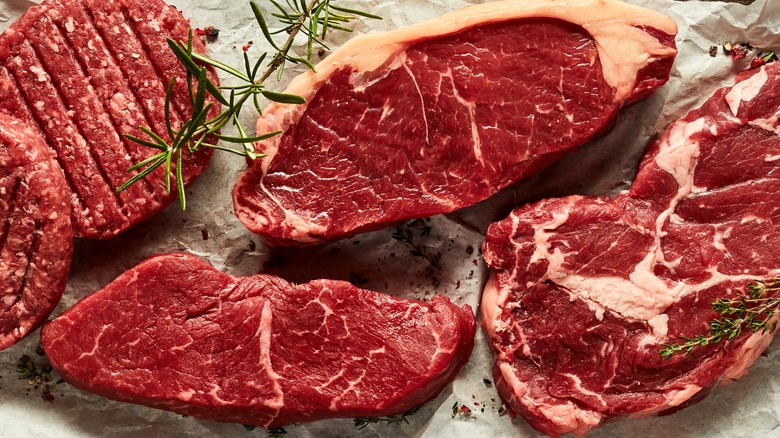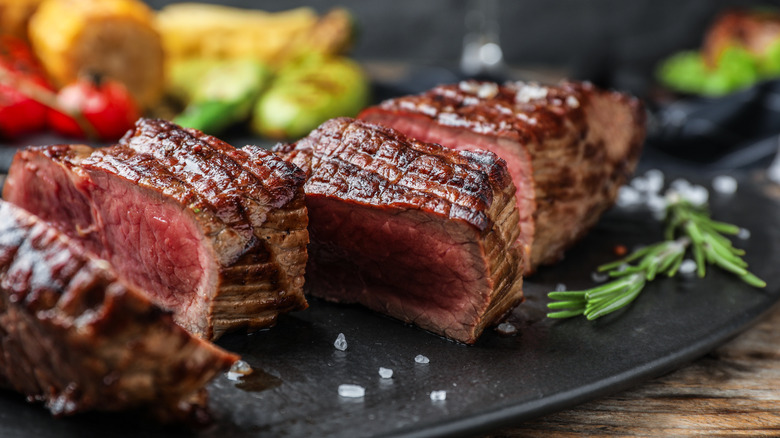The Mouthwatering Difference Between Sirloin And Ribeye Steak
The difference between a good steak and a bad steak is how well you make it, but the flavor and texture vary according to the cut. Sirloin and ribeye are two of the most popular cuts of steak out there, and choosing between the two can be daunting to novice purchasers of beef since they look similar. Either way, you can't go wrong, but each cut has its own merits.
The most important difference between sirloin and ribeye steak lies in the concentration of fat. Ribeye steaks are cut from the rib cage area of cattle along with the rib bone. Since the rib area has the most intramuscular fat, ribeye has a decent degree of marbling which makes the fibers of the meat juicier and packs a luscious flavor.
On the contrary, sirloin steak is leaner and contains less fat. The boneless steak is cut from the back of a cattle, near the hindquarters, that has minimum fat stores. Due to less marbling, the meat has a high protein content but low fat. Basically, it is not as juicy as a ribeye steak. Unlike ribeye, sirloin has three types of cuts: bottom sirloin, top sirloin, and tenderloin. The T-Bone, New York strip steaks, flap cuts, and tri-tip are also all sirloin steaks.
It's all about how you want your steak
Both ribeye and sirloin are tasty cuts of steak, but the choice usually depends on personal preference. As we previously mentioned, ribeye has more fat content than sirloin, so if you're on a health journey, it's probably best to stick with sirloin steak. Per Livestrong, ribeye contains up to 36% more calories and over 50% more fat than sirloin steak. Sirloin has about 14% more protein than ribeye steak. That said, if a rich flavor is what you're after, ribeye steak is the way to go.
When it comes to prices, ribeye is generally pricier than sirloin steak. The USDA grades beef into several categories according to the amount of fat with the most premium being "Prime," and ribeye fits the bill. As for the cooking method, both ribeye and sirloin steaks can be grilled, but according to the Chicago Steak Company, you may need to cook sirloin for a longer time on a lower heat to get it more tender.

